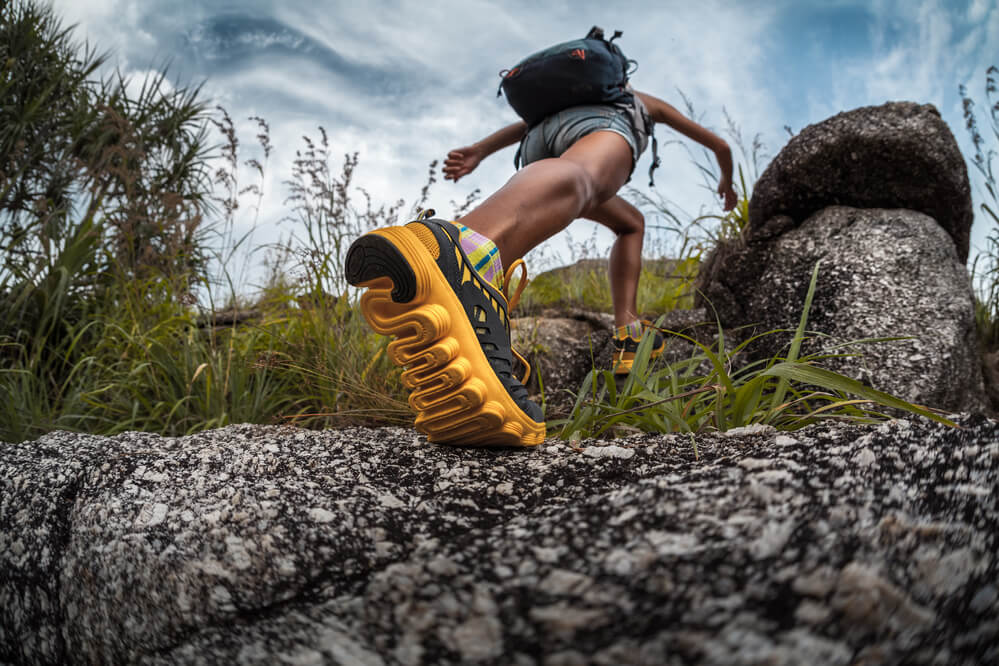
Hiking is an outdoor adventure that the whole family can enjoy. You might think that all you need is a backpack full of food, some extra clothes, and your favorite sneakers. However, this is not the case. Hiking can be very challenging and dangerous if you are not fully outfitted. When you go on a hike, it is very important to be knowledgeable of the trail you will be hiking, bring all your hiking necessities, and most of all — the proper hiking gear.
You might not know this, but the most important gear when you hike challenging trails is your footwear — you should consider investing in a good pair of hiking boots. It is not at all like your usual comfortable sneakers; this footwear can be quite heavy and requires an ample break-in period. So let's take a look at how long does it take to break in hiking boots.
The Importance of a Durable Pair of Hiking Boots
- Provides the needed ankle support during a hike
- Helps prevent ankle sprain and other injuries
- Protects feet from various debris and sharp rocks on the trail
- Better traction
- Water-resistant, so keeps your feet dry and warm
Break-In Period for Hiking Boots
You might wonder why there is a need to break in hiking boots. This is actually very crucial. If you do not break in your hiking boots, there is a big possibility that you will not reach the halfway point of your hike because you will be very uncomfortable and your feet will be covered in blisters.
When you plan to go hiking, be sure to buy your boots at least a month before the actual date of your hiking trip. A month should be more than enough to help your feet get accustomed to your new hiking boots.
Here are a few tips to consider before buying a pair of durable hiking boots:
- Buy hiking boots that are at least one size larger than your regular shoes
- Make sure that you can wiggle your toes while wearing the boots
- Another tip is to fit the shoes while wearing socks that are meant for hiking (not 100% cotton)

How to Break In Your New Hiking Boots
- Wear your hiking boots around the house. This will help your feet get accustomed to the feel and weight of the hiking boots. Make sure to wear the proper hiking socks. Do this for a couple of days.
- To further break in your hiking boots, wear them and walk around the park, or your block a couple of times.
- Once you get more accustomed to wearing your hiking boots, step it up a bit by carrying a light backpack while walking around. This will further help you get more accustomed to your boots and the weight you will be carrying.
- Flex the soles to help make your hiking boots more pliable.
- Simulate hiking conditions. Try to walk up and down on the hilly terrain. Make sure that the terrain is not too challenging.
- Crush the heels of the hiking boots. You can do this by stepping on it or just crush them with your hands.
- When you get more accustomed to your new hiking boots, try to lengthen the period of time you wear them. For example, try wearing your hiking boots all day long; it is better to do this on a weekend. You can go around and do your chores while wearing them.
- Another trick to help break in your hiking shoes is to apply a leather conditioner. This will stretch the leather material and make it more pliable.
- The last recourse is to do it the old way. This is done by soaking the boots in water, then wearing them around the house. This will help stretch and soften the leather and will help shorten the break-in period. However, this will come at a cost, as you will probably shorten the lifespan of your hiking boots.
Properly breaking in your new hiking boots will prove to be more beneficial than you think. Of course, it sounds like you will need to do a lot of things just for a pair of hiking footwear. Is this worth it? Of course, it is because it means that you can hike comfortably.
Wearing comfortable and properly broken in hiking boots will ensure a more enjoyable hiking adventure. You can hike more challenging trails in all conditions with a pair of durable hiking boots. Enjoy that day out in the vast wilderness without any fear of accidental sprains and other injuries.
